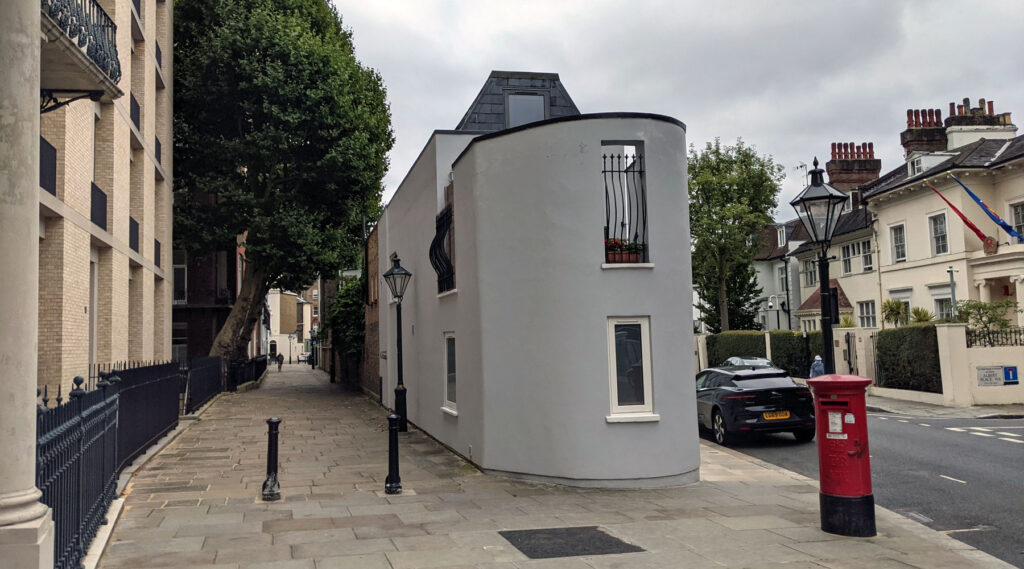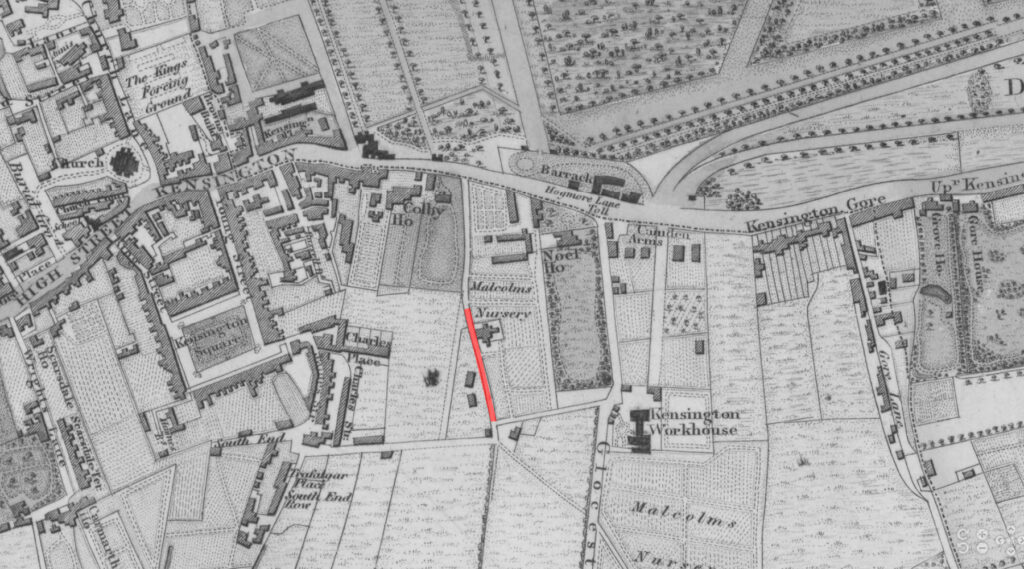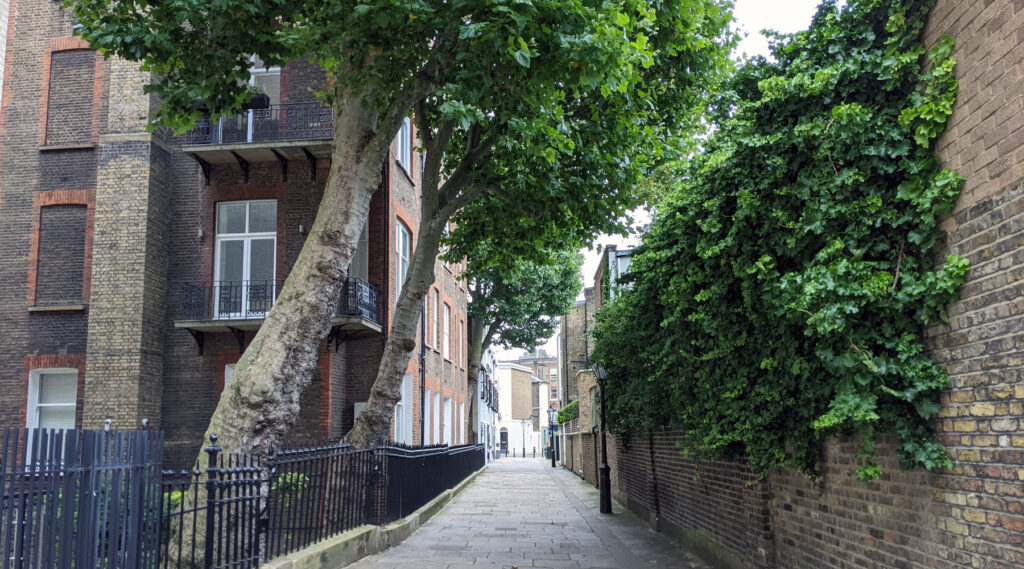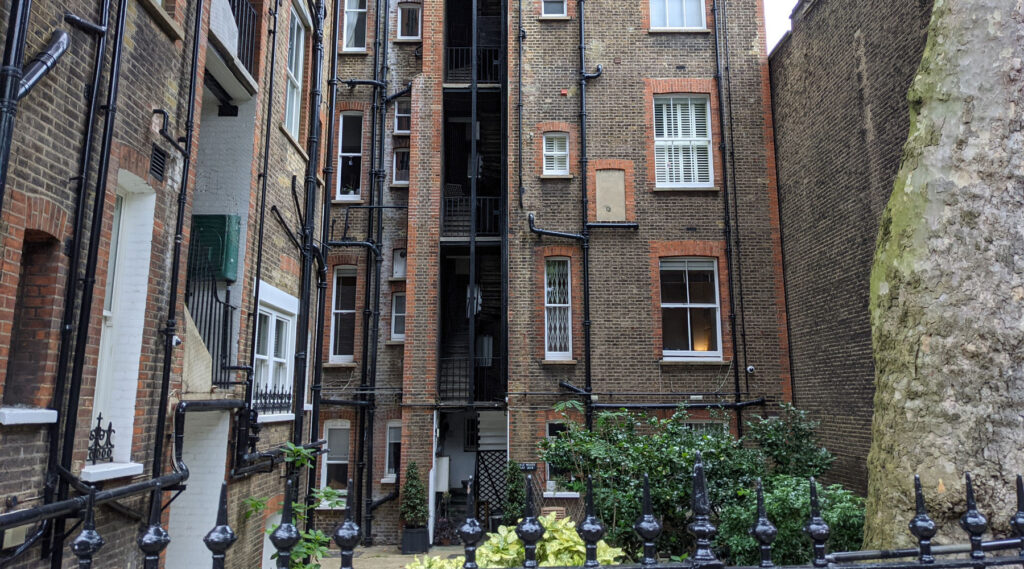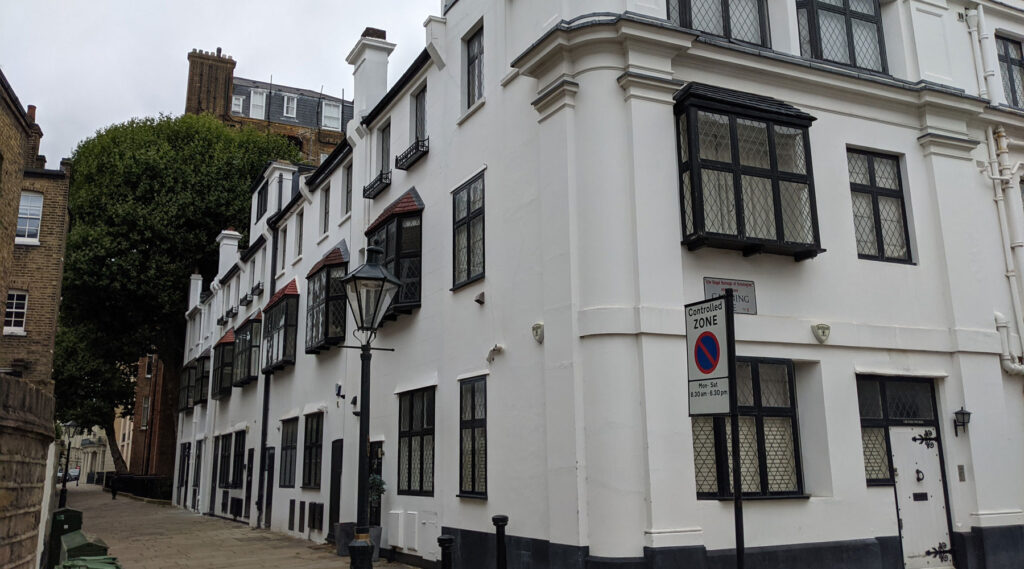This narrow back lane in Kensington looks like a back passage for the houses that back onto it, but in fact, it predates the main roads around it.
It originally shows up as part of a much longer path called Love Lane, when all around here was fields and nurseries. By the 1820s, the area that’s closest to Canning Passage was known as Malcolm’s Nursery and continued as farmland until 1847 when some of the area was developed for shabby housing.
When the Great Exhibition opened in Hyde Park, the former nursery was developed into the Grand National Hippodrome, with a large and impressive stadium – some 500 feet long with seating for 14,000 spectators who came to see horse demonstration performances.
The Hippodrome closed when the Great Exhibition, and the many visitors, moved away, but in 1855, the government considered the site for an early airport – for airships. This wasn’t entirely unprecedented as the Hippodrome had shown off hot air balloon ascents as an exhibition piece, and a Paris Hippodrome had also been used for airship flights in 1852. Plans for an inaugural flight in August 1855 with a 160 feet long airship were, sadly, cancelled, and the land remained empty for many years.
It was the children that inherited the land on the death of their landlord father, who in 1873 sold the land for redevelopment, and it’s that development that dominates the area today. However, when the area was developed into housing, most of Love Lane was lost, as the new road layouts didn’t need to follow any old farm boundaries.
However, one small section of the old path was retained, as Canning Passage.
The western side backs onto a row of cottages, while the eastern side is the rear access to the grand houses on De Vere Gardens, the 5th most expensive street to live on in England. But here in Canning Passage, you can look at the less salubrious backside of the grand Hale House, with its drainage pipes and fire escapes.
What looks like a very modern addition in the passage is a recent replacement, but a bit more interesting than that as it’s not an independent building. The entire row of what look like separate buildings running down from Kensington Gore was a large hotel, but recently redeveloped into residential flats. There’s a new modern building at the northern end, then it continues down behind retained facades, and ends here in Canning Passage with a modern building.
What’s also interesting down here though is at the southern end, a curious almost Tudor looking building. It’s actually former livery stables built around 1852.
It was converted into flats between 1918 and 1925, and inside, if you’re lucky enough to live there, has a lovely secluded courtyard.

